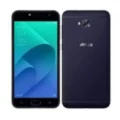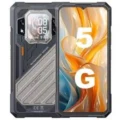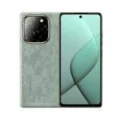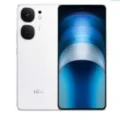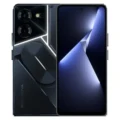Asus Zenfone 3 ZE552KL






- : 3/4GB RAM Snapdragon 625
- : 5.5" 1080x1920 pixels
- : 3000mAh
- : 16MP 2160p
The Asus Zenfone 3 ZE552KL is a smartphone designed for those who want a balance of stunning style and impressive capability.
Crafted for Comfort and Beauty:
- Exquisite design with a smooth, 2.5D contoured glass screen for a luxurious feel.
- Lightweight and comfortable to hold in one hand.
Capture Every Moment:
- Take crystal-clear photos and videos with the 16MP rear camera featuring autofocus and image stabilization.
- An 8MP front camera ensures you look your best in selfies and video chats.
Powerful Performance:
- A responsive octa-core processor handles your everyday tasks and games with ease.
- 4GB of RAM ensures smooth multitasking and app switching.
Stay Connected:
- Dual SIM functionality lets you manage work and personal lines on one device.
- Support for 4G LTE keeps you connected with download speeds of up to 300Mbps.
All-Day Battery Life:
- The 3000mAh battery delivers ample power to get you through the day.
Explore all products of Asus. also visit it official website.
Specs
Network
| 2G Network GSM 850 / 900 / 1800 / 1900 - SIM 1 & SIM 2 (dual-SIM) CDMA 800 / 1900 |
GSM 850 / 900 / 1800 / 1900 - SIM 1 & SIM 2 |
| 3G Network |
HSDPA 850 / 900 / 1900 / 2100 - Global HSDPA 850 / 900 / 1900 / 2100 / 800 - Taiwan HSDPA 850 / 900 / 2100 - India HSDPA 850 / 900 / 1700(AWS) / 1900 / 2100 - USA/Brazil |
| 4G Network |
1, 2, 3, 5, 7, 8, 20 - Global \1, 2, 3, 5, 7, 8, 18, 19, 26, 28, 38, 39, 40, 41 - Taiwan 1, 3, 5, 8, 40 - India 1, 2, 3, 4, 5, 7, 8, 17, 28 - USA/Brazil |
| Speed |
HSPA 42.2/5.76 Mbps, LTE Cat4 150/50 Mbps (Global), LTE (2CA) Cat6 300/50 Mbps (Taiwan) |
LAUNCH
| Announced | November, 2025 |
| Status |
Discontinued |
BODY
| Dimensions | 152.6 x 77.4 x 7.7 mm (6.01 x 3.05 x 0.30 in) |
| Weight | 155 g (5.47 oz) |
| Build | Glass front (Gorilla Glass 3), glass back (Gorilla Glass 3), aluminum frame |
| SIMs SIM (Subscriber Identity Module) is a small card that contains mobile network subscriber's account information. This allows the phone using the card to attach to a mobile network. The SIM card is most commonly associated with GSM and UMTS mobile networks. Moving a SIM card from one phone to another allows a subscriber to switch mobile phones without having to contact their mobile network carrier. SIM cards can also be used by a phone to store limited amounts of data, such as phone numbers and text messages. |
Hybrid Dual SIM (Nano-SIM/ Micro-SIM, dual stand-by) |
Display
| Display Type Display Technology => A number of display technologies and types used in mobile phones => TFT (Thin Film Transistor), IPS (In-Place Switching), OLED (Organic Light Emitting Diode), AMOLED (Active-Matrix Organic Light-Emitting Diode), Super AMOLED (an even advanced version of AMOLED), Resistive Touchscreen (Resistive touchscreens contain two layer of conductive material with a very small gap between them which acts as a resistance), Capacitive Touchsceen (Capacitive touchscreen technology consists of a layer of glass coated with a transparent conductor) | Super IPS+ |
| Size | 5.5 inches, 83.4 cm2 (~70.6% screen-to-body ratio) |
| Resolution | 1080 x 1920 pixels, 16:9 ratio (~401 ppi density) |
| Protection Display Protection => Gorilla Glass is a special alkali-aluminosilicate glass shield with exceptional damage resistance that helps protect mobile displays from scratches, drops, and bumps of everyday use, It is always better to go for a smartphone with Gorilla Glass for that added protection and peace of mind. | Corning Gorilla Glass 3 |
PLATFORM
| Operating System OS => Every computer system run on a base software called Operating System (OS). Operating System controls all basic operations of the computer (such as smartphone, PDAs, tablet computers and other handheld devices). The Operating System allows the user to install and run third party applications (apps), apps are used to add new functionality to the device. | Android 6.0.1 (Marshmallow), upgradable to 7.0 (Nougat), ZenUI 3 |
| Chipset Chipset is a group of integrated circuits designed to perform one or a more dedicated functions, often with real time computing constraints, Popular smartphones are equipped with more advanced embedded chipsets that can do many different tasks depending on their programming. | Qualcomm MSM8953 Snapdragon 625 (14 nm) |
| CPU CPU (Central Processing Unit) mostly known as processors, CPU processes instructions in order to carry out certain functions that make your device operate properly. Processors are often described as the brain of computers, smartphones and tablets, Smartphones and tablets rely on processors to carry out their every task, Processors are an incredibly important factor in selecting any type of computing device, including your smartphone. | Octa-core 2.0 GHz Cortex-A53 |
| GPU GPU (Graphics Processing Unit) is a single-chip processor designed to rapidly manipulate and alter memory to accelerate the creation of images in a frame buffer intended for output to a display, This includes things such as lighting effects, object transformations, and 3D motion. | Adreno 506 |
MEMORY
| Card Slot Memory Card Slot is a special slot for inserting a memory card. Memory cards allow you to expand the phone's built-in memory, A memory card (sometimes called a flash memory card or a storage card) is a small storage medium used to store data such as text, pictures, audio, and video, for use on small, portable or remote computing devices such as mobile phones, mp3 players, digital cameras. | microSDXC (uses shared SIM slot) |
| Internal | 32GB 3GB RAM, 64GB 4GB RAM eMMC 5.1 |
MAIN CAMERA
| Cameras Specs Today’s smartphones come equipped with a very comprehensive set of camera related specifications. Our smartphone, for many of us, has become our primary camera due to it being the one we always have with us. |
16 MP, f/2.0, PDAF, Laser AF, 3-axis OIS |
| Video | 4K@30fps |
| Camera Features |
Dual-LED dual-tone flash, panorama, HDR |
SELFIE CAMERA
| Cameras Specs Today’s smartphones come equipped with a very comprehensive set of camera related specifications. Our smartphone, for many of us, has become our primary camera due to it being the one we always have with us. |
8 MP, f/2.0 |
| Video | 1080p@30fps |
SOUND
| Loudspeaker | Yes |
| 3.5mm jack |
Yes 24-bit/192kHz audio |
COMMS
| WLAN |
Wi-Fi 802.11 a/b/g/n/ac, Wi-Fi Direct |
| Positioning |
GPS, GLONASS |
| Bluetooth Bluetooth is a wireless communications technology for exchanging data between mobile phones, headsets, computers and other network devices over short distances without wires, Bluetooth technology was primarily designed to support simple wireless networking of personal consumer devices. | 4.2, A2DP, EDR, LE |
| Infrared Infrared connectivity is an old wireless technology used to connect two electronic devices. It uses a beam of infrared light to transmit information and so requires direct line of sight and operates only at close range. | |
| USB | USB Type-C 2.0, OTG |
| NFC NFC (Near field communication) is a set of standards for smartphones and similar devices to establish peer-to-peer radio communications with each other by touching them together or bringing them into proximity, usually no more than a few inches. | |
| Radio |
Features
| Sensors Sensors are electronic components that detects and responds to some type of input from the physical environment. The specific input could be light, heat, motion, moisture, pressure and location, The output is generally a signal that is converted to use in computing systems, a location sensor, such as a GPS receiver is able to detect current location of your electronic device. |
Fingerprint (rear-mounted), accelerometer, gyro, proximity, compass |
BATTERY
| Battery Type Battery Type => Cell phones run on various kinds of batteries depending on the manufacturer, phone size or shape and features. There are basically four types of cell phone batteries => Lithium Polymer, Lithium Ion, Nickel Metal Hydride and Nickel Cadmium. | Li-Ion (Lithium Ion) |
| Capacity Battery Capacity is a measure (typically in Amp-hr) of the charge stored by the battery, and is determined by the mass of active material contained in the battery. The battery capacity represents the maximum amount of energy that can be extracted from the battery under certain conditions. | 3000 mAh |
| Placement | non-removable |
MISC
| Colors |
Sapphire Black, Moonlight White, Shimmer Gold |
| Model | Z012DB, Z012D, Z012DA, Z012DC, Z012S, Z012DE |
| Price |
About 330 EUR |
TESTS
| Performance |
Basemark OS II 2.0: 1205 |
| Display |
Contrast ratio: 1355 (nominal), 2.563 (sunlight) |
| Loudspeaker | Voice 65dB / Noise 70dB / Ring 76dB |
| Battery (old) | Endurance rating 74h |
Reviews
Disclaimer Note
We strive to maintain accurate and up-to-date content on our website for general information purposes only. Please refrain from using the material for business, legal, or any other decisions.


